100 mm ball valve: device, classification, comparison with
How does the ball valve DU100? What kinds of this product can be found on sale? Are there any features for mounting the product? How does it look like against the background of alternatives - screw valves and gate valves? Let's figure it out.

First meeting
Design
The main structural element is a ball-shaped butterfly valve with a through channel. As a rule, its diameter is equal to the diameter of the attached pipeline. The rod inserted into the groove of the bolt is led out through the body and is supplied with a convenient handle or gearbox. The function of sealing is performed by polymer seats under the ball and an annular seal around the stem.
What materials can be used for the manufacture of ball valves?
| Element | Materials |
| Housing | Brass, carbon steel |
| Gate | Brass with chrome or nickel plated, stainless steel |
| Compactors | Teflon, PTFE, rubber rings (stem seal) |
| Lever | PVC coated or enamelled steel |
Useful: depending on the working conditions, the handle may have different color markings. Designed for cold-water, hot water and heating, the 100 mm ball valve is marked in red; products with limited heat resistance - blue. Yellow indicates that the valve is for gas.
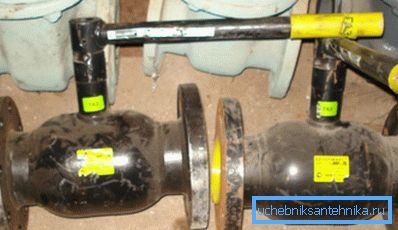
Species
Cranes can be classified according to several criteria.
Type of shell
It can be all-welded and detachable.
- In the first case, as a bonus, the owner receives a greater resistance of the case to hydraulic pressure.: with an increase in the diameter, the tensile force of its walls increases in proportion to the cross section. The price is almost zero maintainability of the product: as a maximum, it is possible to replace a worn sealer around the stem in it.
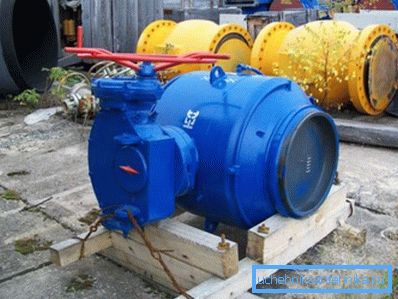
- In the second case, if necessary, replace all worn structural elements. - saddles, stock and even the bolt ball itself.
As a rule, parts of the body with a large diameter are connected by studs.
Pipeline connection
It can be done in three completely traditional ways:
- Threaded Coupling with large diameter, however, is not very popular due to the fact that the thread is difficult to seal and tighten.
- By welding The length of the nozzles for welding and a significant mass of the valve body do not allow dangerous overheating of polymer seals during welding.
- Flanges. They provide quick assembly and disassembly of the crane.
The flanged ball valve DN 100, in turn, can belong to two subcategories. In general, the mounting dimensions of the flange ball valve DN 100 correspond exactly to the mounting dimensions of the steel valve 30s33nzh, which allows replacement without welding on the pipes.
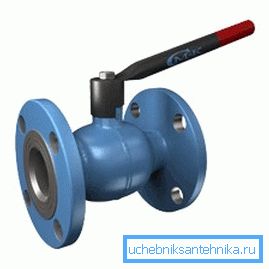
However, when installing new pipelines, shorter, so-called inter-flange valves are used.
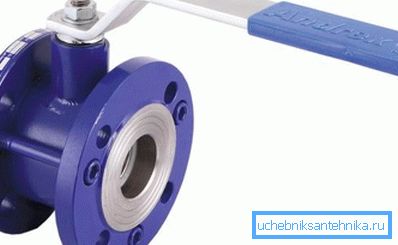
Shutter seal
With small pipe diameters, the sealing of the ball is ensured by simply pressing the seats when assembling the body.
However, for larger gate sizes, a couple more solutions are used.
- The ball is installed between the seats with a small gap. It is pressed against the desired saddle by the pressure of the working medium.
- The saddle is made of a spring-loaded cup spring, which provides the necessary pressing force even with some wear of the fluoroplastic or Teflon.
Installation
It is carried out in any working position. The only restriction is a comfortable position of the handle or the helm of the gearbox. The direction of water flow is irrelevant, which is clearly indicated by the absence of an arrow on the body.
Comparison with alternatives
How does the ball flange valve DU100 look on the background of a flanged screw valve and gate valve of the same size? What type of valves should I choose?
Let's compare them in several ways.
Hydraulic resistance
- Full bore ball valve has almost no resistance to the movement of the stream: there are no turns and transitions of diameter in it.
- The valve in this respect is somewhat inferior to the ball valve. Raised all the cheeks and the wedge are partially in the stream. In addition, diameter transitions between mirrors that make the flow turbulent are present.
- Screw valve - a clear outsider. Winding turns of the body and a relatively small hole in the saddle cause a drop in pressure after this element of the stop valve.
Installation
- As already mentioned, the installation manual for a ball valve doesn’t allow any liberties. He is able to work in any position and in any direction of water flow.
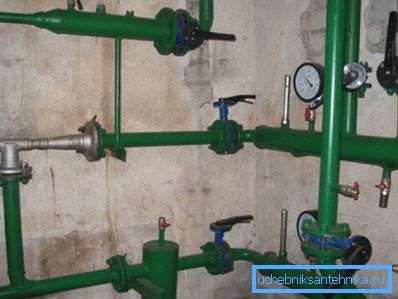
- The valve is not desirable to mount only the steering wheel down. This will make the stuffing box extremely uncomfortable.
- The valve, in addition, must be installed in such a way that the working medium presses on the valve from below. Otherwise, after some time, the valve is inevitable.
By the way: tearing off the valve with a countercurrent is accompanied by a hydraulic shock - passing through the pipeline of a high pressure front. Among the consequences are disconnections at fittings and threads, tears of flexible connections, breaks along the seams of electric-welded pipes and torn radiator plugs.
Service
- In the case of a ball valve, it comes down to tightening the nut on the stem sealer after several hundred opening-closing cycles.
- The screw valve needs periodic (even when idle) packing of the stuffing box and (sometimes) replacing the gasket.
- In the case of a valve, the periodic packing of the gland is complemented by the need for grinding overgrown deposits of cheeks and mirrors.
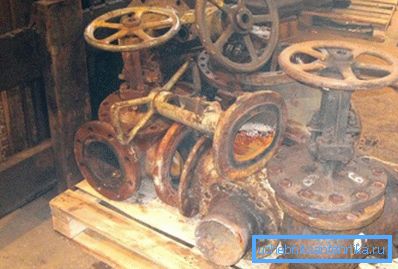
findings
They are pretty obvious: the ball valves in the modern valves do not have serious competitors. An exception can only be products for special conditions (high temperatures, corrosive media, etc.).
The video in this article will traditionally offer the reader additional materials. Successes!